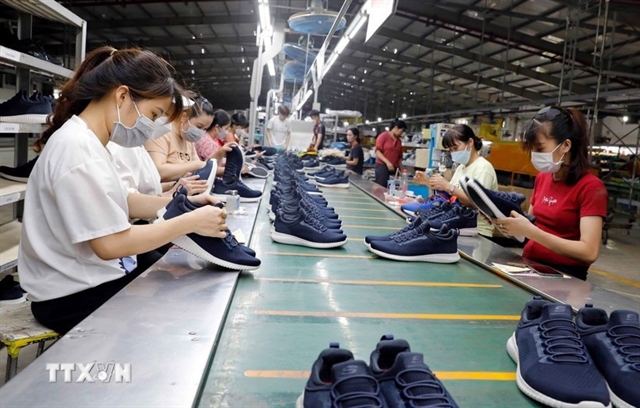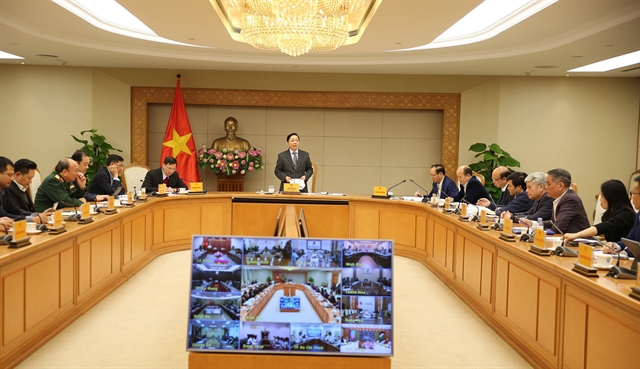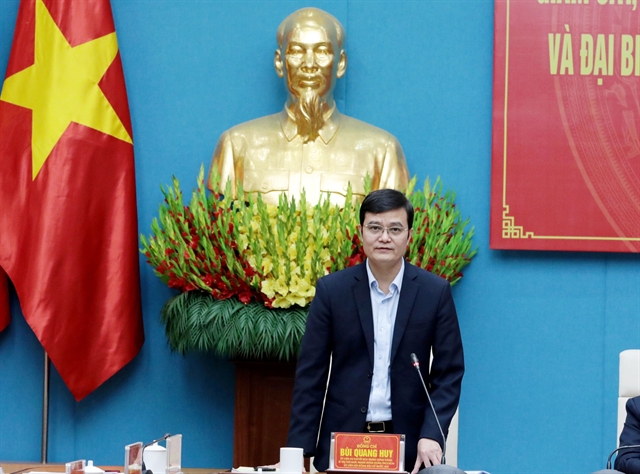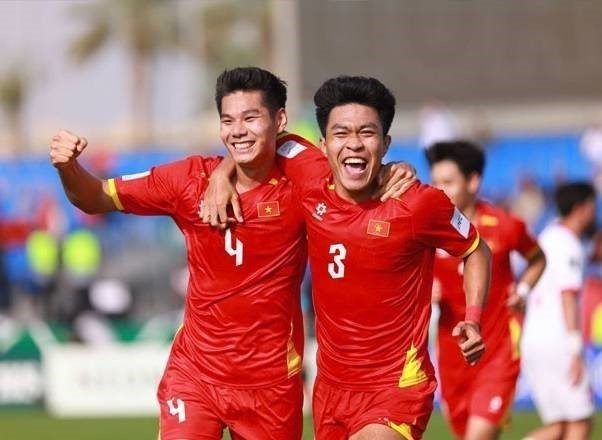 Society
Society
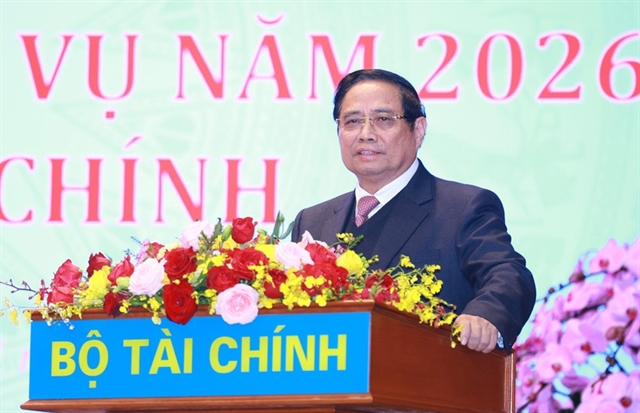
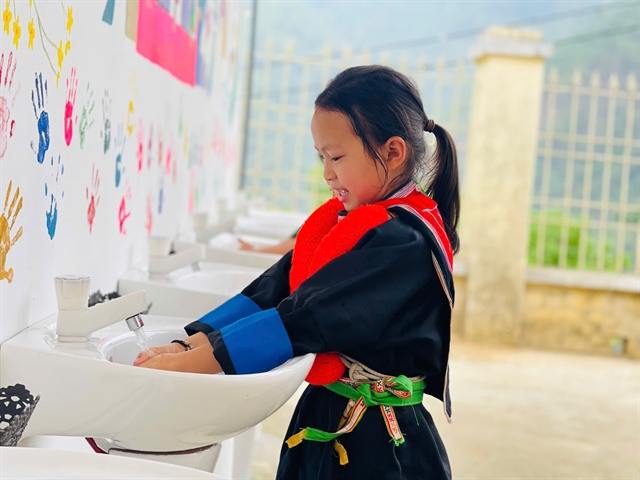 |
| A student happily washes her hands with clean water at the Kim Cúc Primary School in Bảo Lạc District, Cao Bằng northern mountainous province. — VNS Photo Thu Trang |
Thu Trang
CAO BẰNG — Nguyễn Thị Hương has real peace of mind when she sees her students happily wash their hands with clean water.
As the principal of the Kim Cúc Primary School in Bảo Lạc District, the northern mountainous province of Cao Bằng, Hương used to be very worried because after Typhoon Yagi, the school lacked clean water.
“Students had to leave school for a week to wait for a source of water after the typhoon, but when we then got access to water, it was seriously polluted,” explained Hương.
Hương feels lucky after receiving help from the United Nations Children’s Fund (UNICEF) to overcome the problem.
“Thanks to the help, we repaired standard latrines and put in enough hand sinks for the students,” said Hương.
Once that important work was complete, the RO water filtration system supplied enough clean water for students and teachers to drink.
“All of us are excited with the sanitation equipment,” said Hương.
UNICEF’s support
 |
| Students join a dance in a communication event on child safety in responding to natural disasters and climate change held at the Kim Cúc Primary School. — VNS Photo Thu Trang |
Located 15km from the district centre, Kim Cúc Commune has about 600 households with 3,000 people living in six villages, with 100 per cent of the population belonging to the ethnic groups of Tày, Nùng, Dao, Sán Chỉ and Lô Lô.
The commune is classified as Region 3 – an extremely difficult area – in Prime Minister’s Decision No. 353 issued on March 15, 2022. The people primarily engage in agricultural work and the poverty rate is about 72.7 per cent.
Most households use untreated water from streams and approximately 78 per cent of households have no hygienic toilets.
The Kim Cúc Primary School has 239 students and was one of those seriously affected by Typhoon Yagi.
As part of UNICEF’s support, with funding from the Government of Japan, the commune was provided with 100 water tanks, 112 ceramic water filters and 239 sets of essential child protection supplies.
Primary schools were equipped with RO water filtration systems, had their water and sanitation facilities repaired, and installed new hand washing facilities.
UNICEF also carried out training and direct communication activities on water, sanitation and disaster response for communities and schools.
 |
| Students are excited with the clean drinking water system supported by the UNICEF. — VNS Photo Thu Trang |
The Japanese Ambassador to Việt Nam, Ito Naoki, said: "Japan and Việt Nam share a longstanding partnership. As a country with extensive experience in disaster prevention, Japan brings a wealth of knowledge. From the perspective of disaster prevention measures, we are committed to continued cooperation with Việt Nam to achieve our collective vision of a strong, prosperous and resilient Việt Nam."
UNICEF Representative Silvia Danailov found it hard to contain her emotions as she said: "The Government of Japan’s steadfast partnership and support have been crucial in assisting vulnerable children and families in Cao Bằng most affected by Typhoon Yagi. This collaboration not only addresses urgent humanitarian needs, but also lays the foundation for long-term climate resilience for children in Việt Nam.
"Children are extremely vulnerable to climate shocks, as evidenced by the Children’s Climate Risk Index. UNICEF is committed to continue working on disaster preparedness, climate-resilient infrastructure, and child protection, along with our emergency interventions – including humanitarian supplies, capacity building, and mental health support, which are essential to our mission," she said.
More help from IOM
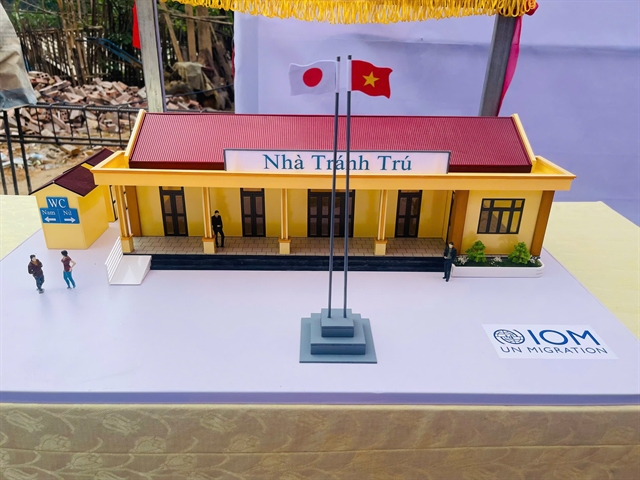 |
| A model of the evacuation centre in Đình Phùng Commune, Bảo Lạc District. — VNS Photo Thu Trang |
A groundbreaking ceremony of an evacuation centre was held on April 9 at Đình Phùng Commune, Bảo Lạc District – one of the most typhoon-affected communities, to provide safer and more durable facilities.
The support from the International Organisation for Migration (IOM), funded by the Government of Japan, will help address the needs of over 3,000 individuals, especially children and families for temporary evacuation in case of emergency and increase their resilience against future disasters.
Chief of Mission, IOM Việt Nam, Kendra Rinas, said: "IOM is proud to partner with the Ministry of Agriculture and Environment, the Việt Nam Red Cross Society and local authorities to provide life-saving non-food items to nearly 17,000 individuals in five provinces in northern Việt Nam, with the support from the Government of Japan.
"In addition to emergency supplies, the project raised awareness on self-protection during typhoon and flood seasons. Together with the evacuation centre, our holistic approach will set a strong course for recovery. More important than ever, we must work closely to achieve our collective vision of strong and prosperous communities in Việt Nam."
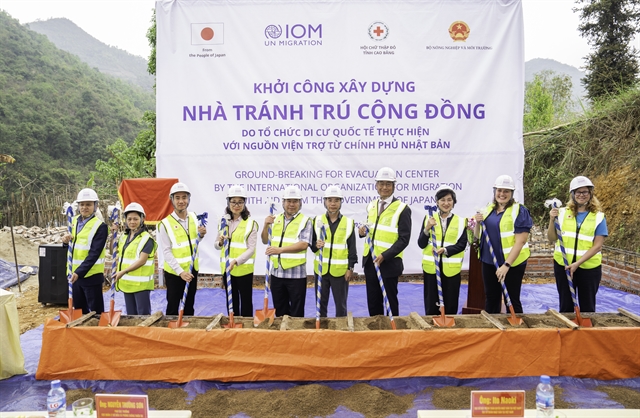 |
| Representatives complete procedures to kick off construction work on the evacuation centre. — VNS Photo Thu Trang |
IOM Việt Nam and the contractor are trying to complete the project by next month, before the rainy and stormy season this year, so that people can have shelter in case of any emergency as soon as possible.
 |
| Ito Naoki, Japanese Ambassador to Việt Nam, speaks at the groundbreaking ceremony of the evacuation centre. — VNS Photo Thu Trang |
The evacuation centre, with a total area of nearly 200sq.m, can provide shelter for 150 people in case of natural disasters or emergencies.
The height from the floor to the ceiling is four metres to ensure air circulation and it is also designed to work as a community cultural house and includes a stage which can be used for meetings and performances for local people in normal times.
When there is a natural disaster, that stage area will be used as a living space for women and children, ensuring privacy.
There is a combined bathroom and toilet area with four rooms, two for men and two for women.
It has a ramp for wheelchairs for the disabled, and a concrete yard to gather and store equipment and necessities in case of natural disasters, which will serve as a playground and for sports activities otherwise.
The Deputy Director of the Department of Dyke Management and Disaster Prevention and Control under the Ministry of Agriculture and Environment, Nguyễn Trường Sơn, said that every year, Việt Nam faced dozens of types of natural disasters such as typhoons, droughts and landslides, causing great loss of life and property and seriously affecting the country's sustainable development, especially in remote and ethnic areas.
Faced with this situation, the Vietnamese Government has been implementing many specific action programmes and projects to enhance the capacity to respond to natural disasters and adapt to climate change.
One of the important orientations is to develop sustainable, community-based disaster prevention and control infrastructure targeting the most vulnerable groups, including women, children, the elderly and people with disabilities.
“The community shelter in Đình Phùng Commune is a concrete example of the orientation. The project is not only a safe shelter for people during the storm season, but also a community space, strengthening connection, preserving and promoting cultural identity, and improving the local people’s ability to respond to natural disasters,” said Sơn.
Fierce typhoon
On September 7 last year, Typhoon Yagi struct northern Việt Nam, causing heavy rains, widespread flooding and severe landslides. By September 28, the Việt Nam Disaster and Dyke Management Authority reported that 3.6 million people across 26 provinces were affected.
Cao Bằng suffered significant losses. Typhoon Yagi caused 55 deaths, 16 injuries and two people were reported missing in the province. It damaged more than 5,200 houses, flooded more than 2,200ha of crops, killed thousands of livestock and isolated many communities. Preliminary damage was estimated at VNĐ850 billion (US$33 million).
As many as 19.33 per cent of the population in Cao Bằng has access to clean water that meets the standard, which is much lower than the national coverage of 55 per cent.
About 74.8 per cent of the population have access to latrines, which is lower than the national coverage of 80.1 per cent, according to a provincial report. — VNS


